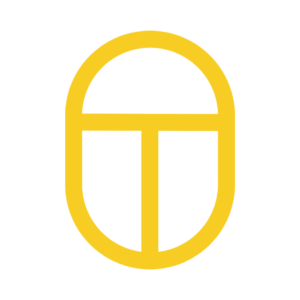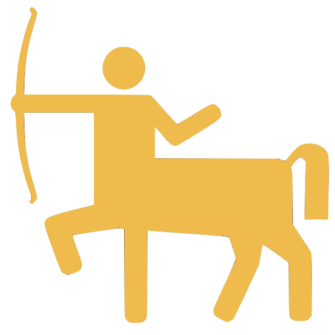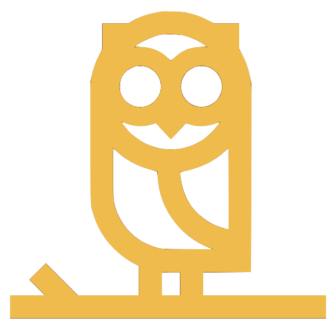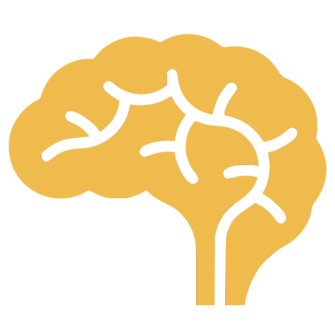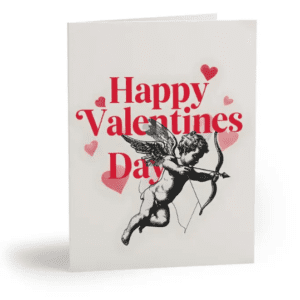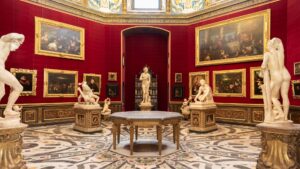The easiest way to understand the Ouroboros? Think of this:
God created mankind in his own image
– Genesis 1:27
The famous line in the bible…
Whether you’re religious or not, whether God is a metaphor for nature or an actual entity, imagine this:
Now, men are creating machines in their image, and if the machines start to know themselves, in other words, gain consciousness, that would make men, the Gods (or God) of the machines. That cycle is the Ouroboros
That was just one representation of the Ouroboros. A pretty deep one I should say. We’ll be discussing more on that and how the ouroboros model governs the cosmos (existence), from microscopic to macroscopic entities, but first, let’s discuss the origins, usage and meanings of this rather inconspicuous symbol.
The Ouroboros symbol is not as mainstream as the Yin Yang or the Cross. People who are familiar with it ‘usually’ have an interest in the occult, mythological symbolism, or archetypal psychology. Nevertheless, the symbol can still be found today, on tombstones and cemeteries, buildings, churches, coat of arms, or insignias.
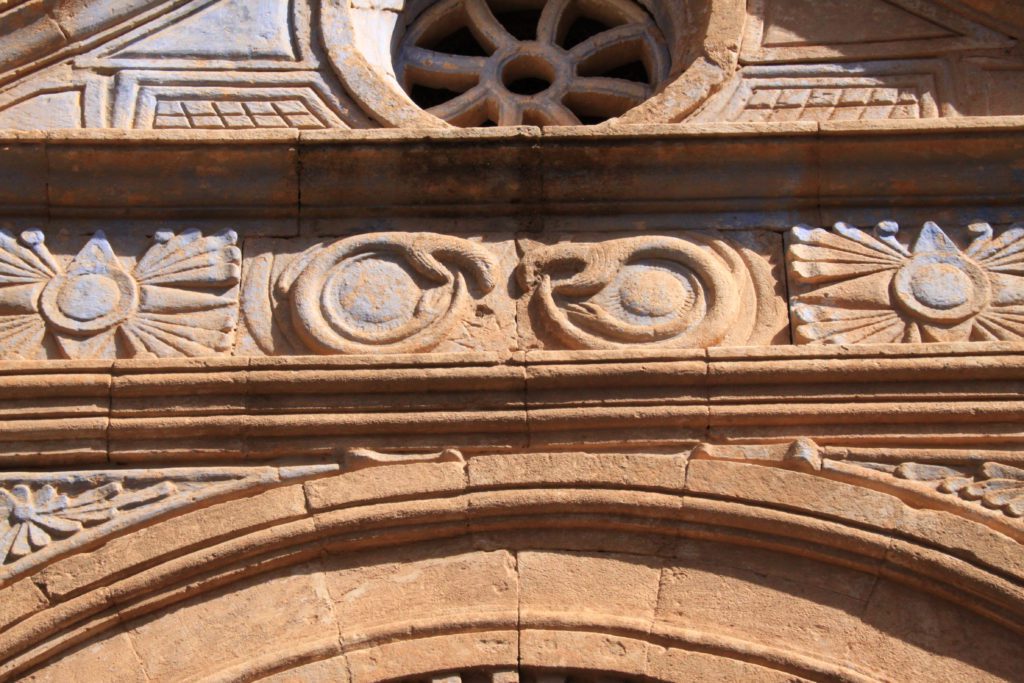
Main Concepts of the Ouroboros Symbol
The Ouroboros can vary in shape and style but generally, it’s characterized as a serpent (or dragon) eating its own tail, creating a circular shape. It has been given various meanings throughout history but 3 most recurring concepts are :
- Eternal cycle / Eternal Return
- Self- sufficient
- Unity of all things
The earliest record of the Ouroboros iconography was found in the Enigmatic Book of the Netherworld, an ancient Egyptian funerary text dating back to around 1600 BC
And according to the Academic Dana Micheal Reemes, to the ancient Egyptians, the Ouroboros image was never a unique symbol with an idea attached to it, but rather a part of their language; a variant amongst related images, that conveyed different things depending on the context. In some cases, it could denote the recurring solar year. In others, it was used as a protective enclosure of the God or individual, a deceased, the sun, or the cosmos.
Also, the Egyptian snake didn’t necessarily eat its tail. At times, the tail was near the mouth, and at others, it was overlapping the head. Its shape also varied depending on what it was englobing.

One of the Egyptian creation myths tells how the world was conceived from a divine point, or an Atum, appearing in a formless abyss. Its expansion characterized by a great burst, would create the cosmos, a progressive differentiation of the divine substance. Very similar to the Yin Yang creation theory and today’s popular big bang theory.
The outward expansion from the point was symbolized by a great spiralling serpent, called Mehen (which means ‘coiled one’).
The encapsulating snake acts as the membrane of the cosmos symbolizing the furthest limit of the ordered world within the vast abyss of formlessness.
Norse Mythology Uses Snake to Convey Order in the World
A Norse mythology also used the snake to convey an ordered world…
It was monstrous and encircled the entire globe with its tail in his mouth. And once he lets go of it, the world would collapse and everything would be wiped out, to renew once again by the repopulation from a couple of survivors. (kind of like the Arch of Noah).
The Norse called this snake Yörmungandr. The ancient Egyptians called theirs sd-m-r3 (tail in mouth)
The name Ouroboros was given by the Greeks and roughly means TAIL-DEVOURING
When the Greeks discovered the Egyptian tail-eating-snake iconography, they incorporated it into their magical and alchemical text. Its meanings would slightly diverge.
In the Chrysopheia alchemical text, the ouroboros symbol was used to depict the interconnectedness of the cosmos, with a scripture in it saying “All is One”. And since, it was used in all sorts of magical text and black magic, up to the 1800s.
Nowadays, the ouroboros is mainly adopted by esoteric and occult groups to mean various related ideas. Nevertheless, academics in biology, philosophy and psychology did analyze the symbol and its concepts.
For example, the highly praised philosopher Nietzche writes on the eternal return (or eternal recurrence) which speaks of the universe and all its events constantly recurring, for eternity, and we are just part of it. To make amends to this horrifying reality, one needs to have ‘Amor Fati’; the love of fate.
Carl Jung – Ouroboros as Archetypal Image
Carl Jung, the famous psychiatrist, considers the Ouroboros, which can also be expressed as two dragons or two different animals, to be one of many archetypal images residing in our collective unconscious. In the Jungian psychoanalytic view, humanity from its conception, shares a collective soul that contains recurring themes, which are represented consciously as universal symbols. This can be done through dreams, if you remember them. For example, the molecular structure of Benzyne was inspirationally revealed to August Kekule, when he dreamed of an Ouroboros.
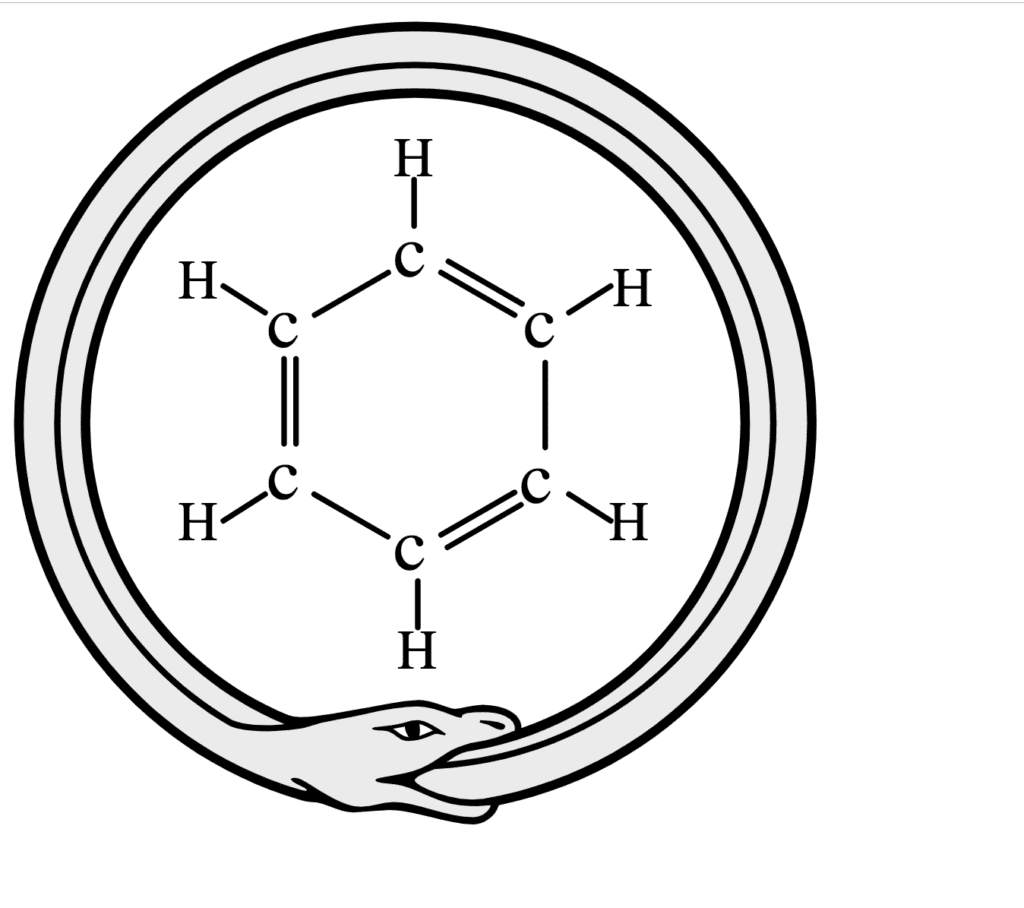
Jung’s contribution to the knowledge of the Ouroboros has helped to solidify it as a discrete symbol. Now, Academic journals of various fields use the term Ouroboros to explain its theories of self-sufficiency and ongoing cycle.
With a theme as profound as the Ouroboros, it is only natural that it permeates popular culture. An underrated book series entitled The Worm Ouroboros, was essentially the precursor of the Lord of the Rings, and as you would expect, pervades the idea of receptive cycles.
Principles of the Ouroboros
Ok, so we spoke enough about the history, now let’s get to the juicy stuff; let’s dissect the ouroboros symbol and see how our world is governed by its principles:
The ouroboros is SELF SUFFICIENT and ETERNALLY CYCLICAL
Not only does the snake represent renewal because of its frequent skin shedding but the closed-loop also indicates an ongoing cycle, with no beginning and no end. And the snake eating its own tail shows that its waste provides its food. It does not require an outside force to keep going.
We clearly see this in all living things. From plants to human beings, the reproduction system is an ongoing loop. Seeds turn into plants which provide more seeds. Reproduction is one form of cycle. There are various types which we’ll soon see.
Unity of all things; All is One
Like in the Yinyang, the circle symbolizes a unit, a whole or the heavens. The Ouroboros expresses how everything in the universe is connected. The snake eating itself also suggests the act of englobing. One entity contains another and is contained by another.
For example, atoms combine to form molecules, which come together to form cells, they in turn form tissues, which in turn form human beings, who come together to form civilizations, and so forth.
This other form of cycle could be compared to the Emergence phenomena.
Emergence is the arising of novel and coherent structures, patterns and properties during the process of self-organization in complex systems. The whole has properties that its parts do not have on their own. Emergence occurs practically everywhere; in the sciences, humanity, philosophy…
Say we could scale back to view ALL THAT THERE IS. All that exists would also be a unit; a unit in which virtually everything (from physical to abstract) shares the same repetitive pattern. Of birth and death for instance. A human being is subject to birth, growth, maturity and death. So is a civilization. Or seasons.
Scientists along with some ancient myths suggest that the universe is also born and eventually will die. Who knows by then, some new form of existence or ‘reality’ would have been created. This would be analogous to humans passing on their genes before they die. Virtually, everything is created, subject to death, and creates.
Creation creates creation.
And this means any type of creation…
Perhaps it is that fear that made God forbid Adam and Eve from eating from the tree of knowledge.
See, according to the Abrahamic creation myth, Adam and Even were the first people on earth, created by God in his image. But they were innocent and unashamed of their nakedness and spent their eternal days in the Garden of Eden, allowed to eat anything they wanted, except from the tree of knowledge of Good and Evil. But one day, a snake appeared and convinced them to eat the apple from the forbidden tree. When God found out, he banished them from the garden and condemned them to suffering and mortality and he said, “The man has now become like one of us, knowing good and evil”.
It is highly disputed what ‘knowledge of good and evil’ entails, but many scholars suggest that it is overall the awareness of the self, knowledge and the yearning for knowledge.
Something that differentiates humans from everything else.
Many believe that the snake is the symbol of evil. But here’s where I offer another interpretation.
Perhaps the encouragement of the snake is the force of the ouroboros, which symbolizes nature’s inevitable renewal. Adam and Eve were fated to eat from the tree of knowledge. They were fated to gain knowledge, and evolve to such an extent that they, in turn, know how to create anew. They were also fated to become mortal because for renewal to exist, there needs to be death. According to the Ouroboros, the only eternal thing is the cycle.
Today, men’s creation of machines is improving at an exponential rate. That these machines eat from the tree of knowledge, in other words, become human-like, may no longer be in our hands, but in those of the ouroboros.
Sources
Books / Journals / Thesis
- Reemes, Dana Michael. The Egyptian Ouroboros: An Iconological and Theological Study. [Dissertation]. Los Angeles (California): UCLA , Near Eastern Languages and Cultures; 2015
- Jarrett J L (1998) Jung’s Seminar on Nietzsche’s Zarathustra. Princeton, New Jersey: Princeton University Press. p. 1286
Websites
- Ouroboros – https://en.wikipedia.org/wiki/Ouroboros
https://www.britannica.com/topic/Ouroboros - Eternal Return – https://en.wikipedia.org/wiki/Eternal_return
- Egypt – https://en.wikipedia.org/wiki/KV62#Enigmatic_Book_of_the_Netherworld
- Kekule’s dream – https://www.chemistryviews.org/details/ezine/1398993/Ouroboros_Breathes_Benzene.html
- Carl Jung – https://en.wikipedia.org/wiki/Jungian_archetypes
- The Worm Ouroboros book – https://www.questia.com/library/journal/1P3-3085292071/the-foundations-of-e-r-eddison-s-the-worm-ouroboros
- Emergence – https://en.wikipedia.org/wiki/Emergence
Images
- Egyptian snakes
- The Tomb of Seti I/ Das Grab Sethosʼ I., phot. Harry Burton (Zurich and Munich: Artemis Verlag, 1991) 250, pl. 186.
- Alexandre Piankoff, trans., The Shrines of Tut-ankh-amon, ed. N. Rambova, Bollingen Series 40.2. (New York: Pantheon Books, 1955) fig. 41 (detail).
- Alexandre Piankoff, trans., The Tomb of Ramesses VI, ed. N. Rambova, vol. 2 (plates), Bollingen Series 40.1 (New York: Pantheon Books, 1954) pls. 20-21 (detail).
- Hartwig Altenmüller, “Dritter Vorbericht über dir Arbeiten des Archäologischen Instituts der Universität Hamburg am Grab des Bey (KV 13) im Tal der Könige von Theben.” SAK 21 (1994) fig. 1.
- R. Cooper, The Serpent Myths of Ancient Egypt. Being a Comparative History of the Myths Compiled from the “Ritual of the Dead,” Egyptian Inscriptions, Papyri, and Monuments from the British and Continental Museums (London: 1873) 63, fig. 107.
- Alexandre Piankoff, trans., Mythological Papyri, ed. N. Rambova, vol. 2 (plates), Bollingen Series 40.3. (New York: Pantheon Books, 1957) pl. 1.
- solar rebirth – Alexandre Piankoff, trans. Mythological Papyri, ed. by N. Rambova, vol. 2 (plates), Bollingen Series 40.3. (New York: Pantheon Books, 1957) pl. 27 (detail).
- Valdemar Schmidt, Sarkofager, mumiekister, og mumiehylstre i det gamle Aegyptens. Typologisk atlas (Copenhagen: J. Fimodts Verlag, 1919) 203, figs. 1157, 1158.
- Ouroboros from the Chrysopoeia – Marcellin Berthelot, ed. and trans., Collection des anciens Alchemistes grecs, vol. 1, (1888. Reprint [3 vols. in 1], London: Holland Press, 1963) 132, fig 11.
- Niwińskiʼs diagram – Andrzej Niwiński, “Noch einmal über zwei Ewigkeitsbegriffe. Ein Vorschlag der graphischen Lösung in anlehung an die Ikonographie der 21. Dynastie,” GM 48 (1981) 46, fig. 1.
- Jormungandr – https://www.comicartfans.com/gallerypiece.asp?piece=1380137
- Human finger touching Robot finger – https://www.inc.com/jessica-stillman/21-future-jobs-robots-are-actually-creating.html
- Eternal circle black and white image – https://www.behance.net/gallery/21329481/Eternal-Return-(Tribute-to-Nietzsche)
Journals
- https://content.sciendo.com/view/journals/slgr/41/1/article-p105.xml
- https://scholarlykitchen.sspnet.org/2010/10/04/ouroboros-and-peer-review-new-proposals-continue-to-chase-their-own-tails/
Public Domain Images
https://pixabay.com/
https://en.wikipedia.org/wiki/Wikipedia:Public_domain_image_resources
Video
Newton’s Cradle – https://www.youtube.com/watch?v=zPQTbX0UEZw
Bird Formation –
Sam Harris at Ted Talk – https://www.youtube.com/watch?v=8nt3edWLgIg&list=PLvQ8YsgmCvK5ZqEREWKRFTZGGRpxUhdMN&index=6&t=0s
